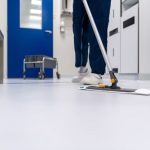In the realm of construction, ensuring thermal comfort within metal structures is paramount. With temperature fluctuations being a constant concern, proper insulation stands as the cornerstone for maintaining optimal indoor conditions. From warehouses to residential spaces, understanding insulation for metal buildings is essential for energy efficiency and occupant comfort.
Why Thermal Comfort Matters:
In the pursuit of creating livable spaces, thermal comfort plays a pivotal role. Imagine stepping into a room where the air feels too chilly or excessively hot – such environments are not conducive to productivity or relaxation. Thermal discomfort can stem from various factors, but inadequate insulation often stands out as a primary culprit.
Understanding Insulation for Metal Structures:
Metal structures possess unique thermal properties compared to traditional brick or concrete buildings. They are more susceptible to heat transfer, making them prone to rapid temperature changes. Consequently, insulation becomes critical for regulating indoor temperatures and minimizing energy consumption.
Types of Insulation Materials:
Insulating metal structures requires selecting the appropriate materials tailored to the specific needs of the building. Common options include:
Spray Foam Insulation: Ideal for irregularly shaped spaces, spray foam adheres seamlessly to metal surfaces, creating an effective thermal barrier.
Fiberglass Insulation: Cost-effective and readily available, fiberglass insulation offers excellent thermal resistance and is relatively easy to install.
Reflective Foil Insulation: Designed to reflect radiant heat, foil insulation is particularly beneficial in hot climates, helping to keep interior spaces cool.
Rigid Foam Insulation: With high compressive strength, rigid foam boards are suitable for insulating metal roofs and walls, providing durability and superior thermal performance.
Installation Techniques:
Proper installation is key to maximizing the effectiveness of insulation in metal structures. Here are some essential techniques to consider:
Sealing Air Leaks: Addressing gaps and cracks in the building envelope prevents air infiltration, enhancing insulation efficiency.
Ensuring Vapor Barrier Protection: Installing a vapor barrier prevents moisture buildup within the insulation, safeguarding against mold and mildew growth.
Consideration of Condensation Risk: Metal structures are prone to condensation, which can compromise insulation effectiveness. Incorporating proper ventilation systems helps mitigate this risk.
Benefits of Adequate Insulation:
Investing in quality insulation for metal structures offers a myriad of benefits:
Improved Energy Efficiency: By reducing heat transfer, insulation minimizes the need for excessive heating or cooling, leading to significant energy savings.
Enhanced Comfort: Maintaining stable indoor temperatures enhances occupant comfort and productivity, promoting a healthier living or working environment.
Long-Term Cost Savings: While initial insulation costs may seem daunting, the long-term savings in energy bills outweigh the upfront investment.
Summing it Up:
In conclusion, prioritizing thermal comfort through effective insulation for metal buildings. By understanding the various insulation materials and installation techniques available, property owners can create energy-efficient, comfortable spaces conducive to the well-being of occupants. Whether it’s a commercial warehouse or a residential building, investing in insulation pays dividends in terms of energy savings and occupant satisfaction. So, next time you embark on a construction project involving metal structures, remember the importance of insulation in ensuring optimal thermal comfort.










